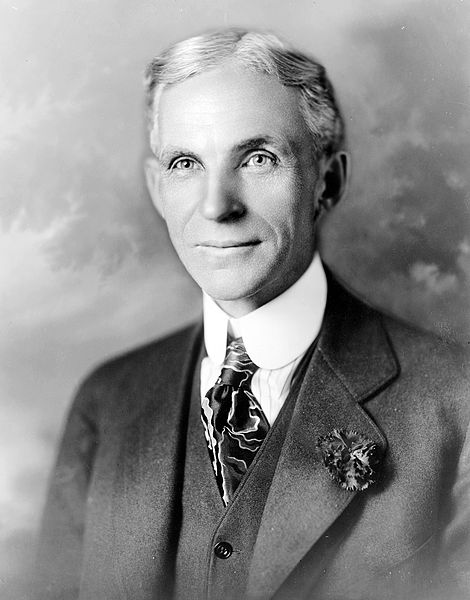Fordlandia: Henry Ford’s Forgotten Amazon City
 Henry Ford was without doubt a great industrialist. But he had several unusual passions and two of them converge, rather ironically, in the story of Fordlandia.
Henry Ford was without doubt a great industrialist. But he had several unusual passions and two of them converge, rather ironically, in the story of Fordlandia.
Ford liked his automotive business to be as self-reliant as possible. He disliked being dependant on outside suppliers.
He always feared that he was at their mercy. They could put up their prices or take advantage of him in other ways.
He was also passionate about soybeans. He used plastics made from soybeans in his vehicles.
In the 1920s, the rubber industry was controlled by the British. In the previous century an explorer called Henry Wickham had sneaked rubber plant seeds out of Brazil.
The British discovered that these plants would flourish in the Far East, better in fact than in Brazil, and thus the British rubber industry was born.
Ford, with his passion for being self-sufficient, hated this,
In those days, the USA was the largest market for rubber, mostly for he automotive business. Vehicles needed new tyres every 2,000 to 3,000 miles.
Rumours abounded that the British were going to hugely increase their rubber prices . America needed to produce its own.
But rubber plants wouldn’t grow successfully in the USA and inventors couldn’t produce a synthetic substitute. Ford Motor Company was the world’s largest customer for rubber so Ford took matters into his own hands. I assume that he objected to having to be dependent on the British – although his father was English, Ford was a passionately patriotic American.
He planned to create an American city in the heart of the Brazilian jungle. Here, he decided, he would run his own rubber plantation. The Brazilians responded favourably. Thanks to the British, their own rubber industry was dwindling away so they sold him cheap land and declared him exempt from various tax and duty payments. THey gladly gave him permission to build hospitals, schools, private airports and railroads – he had carte blanche.
His first mistake was his choice of supervisor for the project, a Ford employee names Willis Blakely. Blakely was given the task of building an entire town to Ford’s exact specifications. Ford Motor Company’d designers created renderings and drawings. Ford insisted that all clocks in the town would be set to Michigan time and that prohibition would be rigorously enforced. Fordlandia would be totally American.
Blakely was also detailed to create rubber plantations surrounding the town and, because of Henry Ford’s passion for self-reliance, discover uses for all native plants in the area. Blakely was woefully inadequate for the task. He hired three thousand local labourers to clear the jungle and start construction. Ford spent a fortune sending equipment to Brazil.
Blakely made little progress and was replaced by a Norwegian, Einar Oxholm. He too had little success. The workers were unhappy with their wages – they had imagines that they’d be paid the same as Ford workers in the USA – and objected to Henry Ford’s insistence that the no alcohol rule of the prohibition should be enforced. Eventually, they revolted and the managers had to flee from the machete-wielding mob.
After this debacle, a new manager was appointed. This was a Scotsman named Archibald Johnson. He began to make genuine strides into the progress of the project. But the costs were enormous and far outweighed any potential profit.
Twenty years after he had initiated the idea of Fordlandia, Henry Ford abandoned the idea.
The land on which the failed rubber plantations stood was sold to another American company called Cargill’s.But they didn’t use the land for rubber production.
Instead they were successful in growing a crop that Henry Ford had long revered as the crop of the future – soybeans.
ABOUT THE AUTHOR



